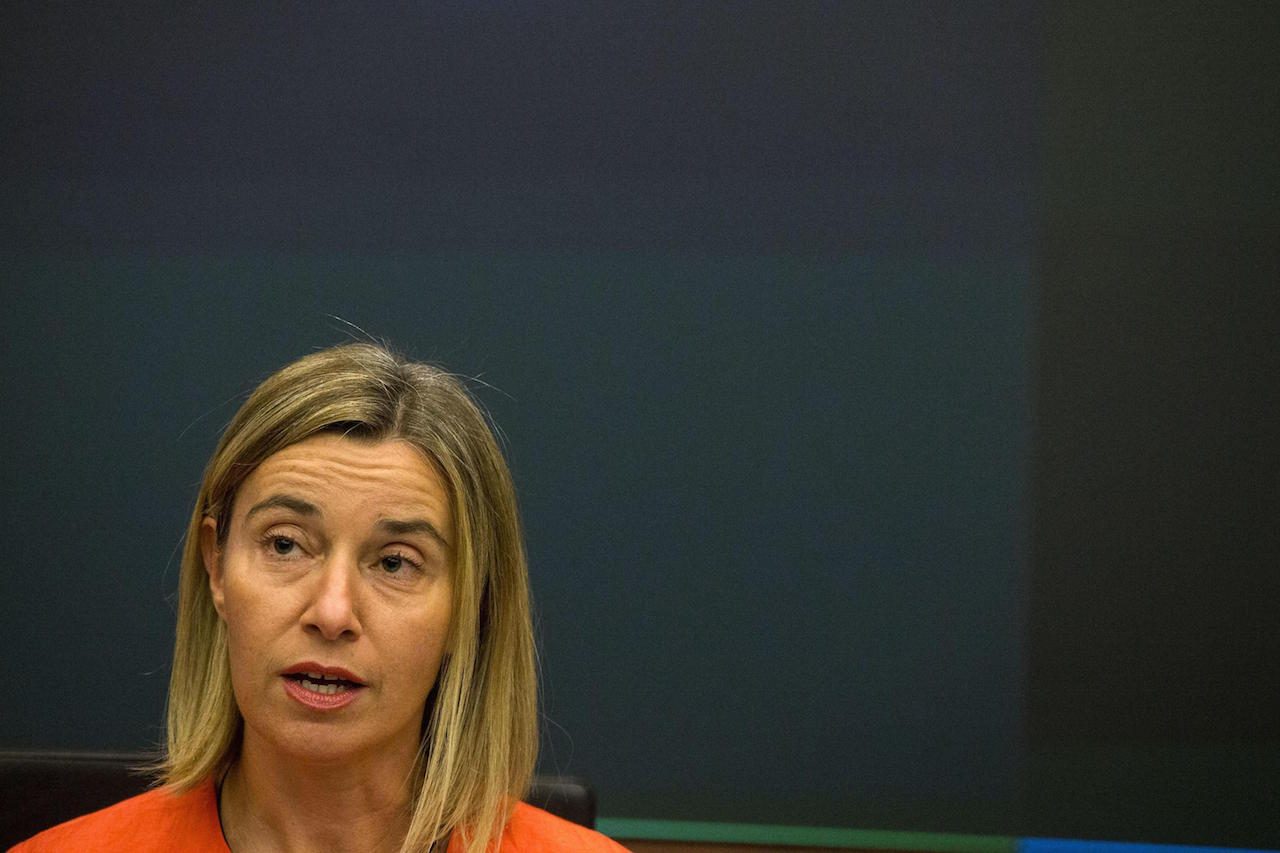SUMMARY
This is AI generated summarization, which may have errors. For context, always refer to the full article.

ROME, Italy – An EU operation against migrant traffickers in the Mediterranean which will allow for arrests in international waters will begin on October 7, the bloc’s foreign affairs chief said Thursday, September 24.
“The political decision has been taken, the assets are ready,” Federica Mogherini said at the Rome headquarters of the European Union’s military operation, dubbed EU NAVFOR MED.
The EU recently approved the use of military force against migrant traffickers, including the seizure of vessels used to ship people across the Mediterranean, many of which set off from Libya. (READ: Mediterranean migrant crossings to Europe top 100,000 in 2015 – UN)
During the new phase, European warships will be used against traffickers on the condition they remain within international waters and do not stray into Libyan territory, Mogherini said.
Launched at the end of June, the operation currently involves 4 ships – including an Italian aircraft carrier – and 4 planes, as well as 1,318 staff from 22 European countries.
The first phase was focused on reconnaissance, surveillance and intelligence gathering, and involved speaking to migrants rescued at sea and compiling data on trafficker networks.
“We have now a complete picture of how, when and where the smugglers’ organizations and networks are operating so that we are ready to actively dismantle them,” Mogherini said.
From October, “we will be able to board, search, seize vessels in international waters, (and) suspected smugglers and traffickers apprehended will be transferred to the Italian judicial authorities”.
More difficult for traffickers
In the past few weeks, the operation has identified 20 boats – 17 Libyan and 3 Egyptian – used by traffickers to escort the migrant vessels out to sea which could have been targeted if phase two had been operational.
“It will be now be more difficult for traffickers to operate,” Mogherini said.
“We have a lot to do in high seas, and in the meantime we are continuing to work on the legal framework that could make it possible for us to operate also in Libyan territorial waters,” she added.
They are still waiting for the green light from the EU’s security council and the Libyan government to operate in Libyan waters.
Mogherini suggested the outfit’s name should be changed to “Sophia”, the name of the baby girl born at the end of August on the German boat Schlewig-Holstein, after her Somalian parents were saved from a boat off Libya.
Italy’s chief anti-mafia prosecutor Franco Roberti, who investigates traffickers as an organized crime group, told Agence France-Presse it was not enough for the EU just to target smugglers at sea.
What is needed is “not so much to arrest traffickers, because they are the last link in the chain, but to combat human trafficking, the organizers, the criminal organizations behind all of it, those who have the money,” he said.
“That’s why it’s indispensable to have cooperation with the North African countries and Egypt,” he said, referring to areas where smugglers often pick up many would-be immigrants. (READ: Europe’s migrant policy creates ‘smugglers’ market’: study)– Olivier Baube, AFP/Rappler.com
Add a comment
How does this make you feel?
There are no comments yet. Add your comment to start the conversation.